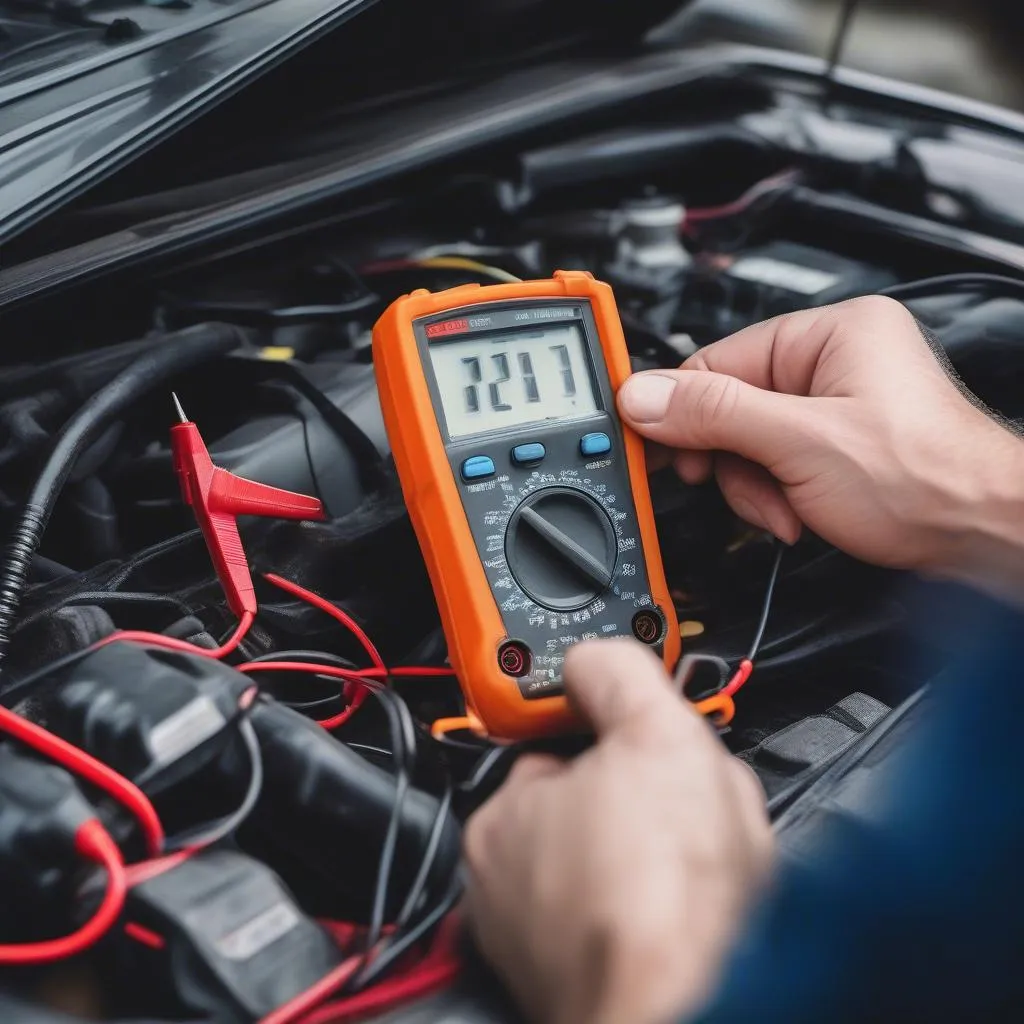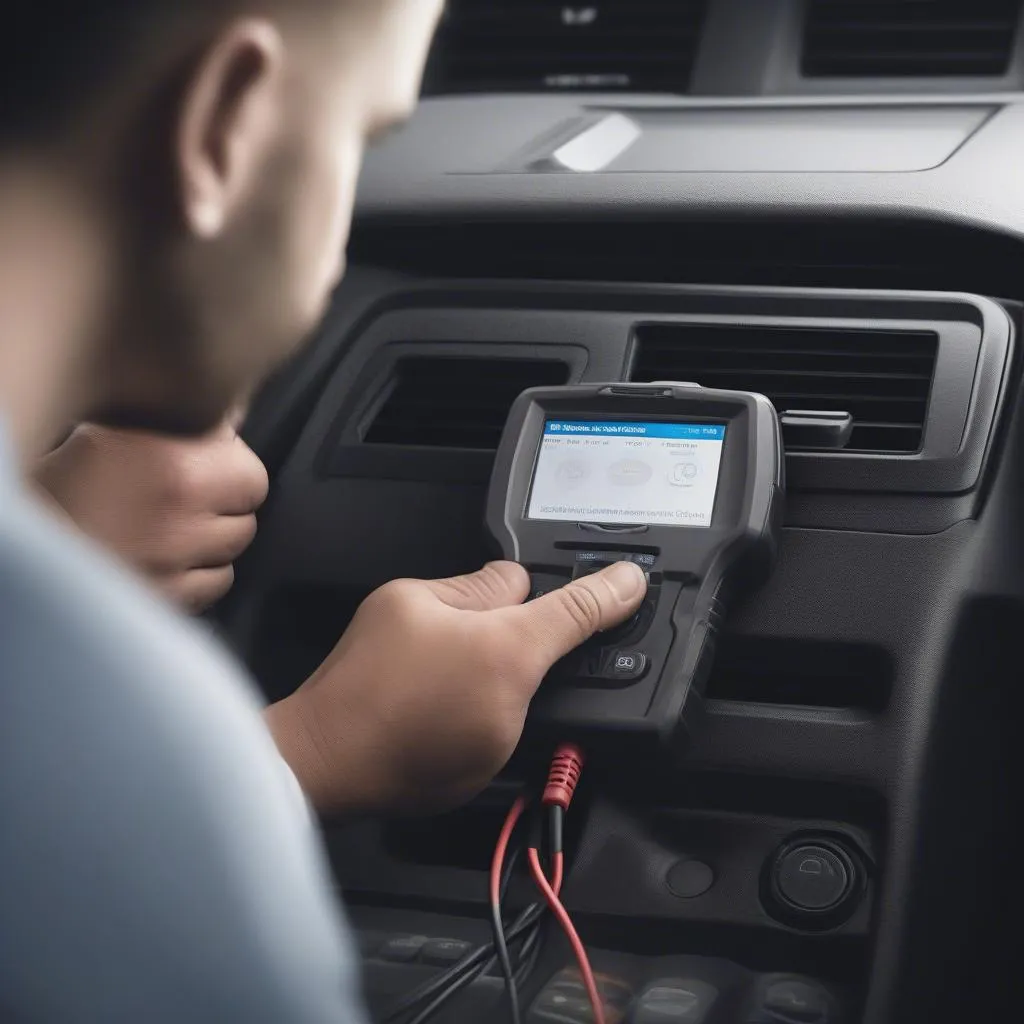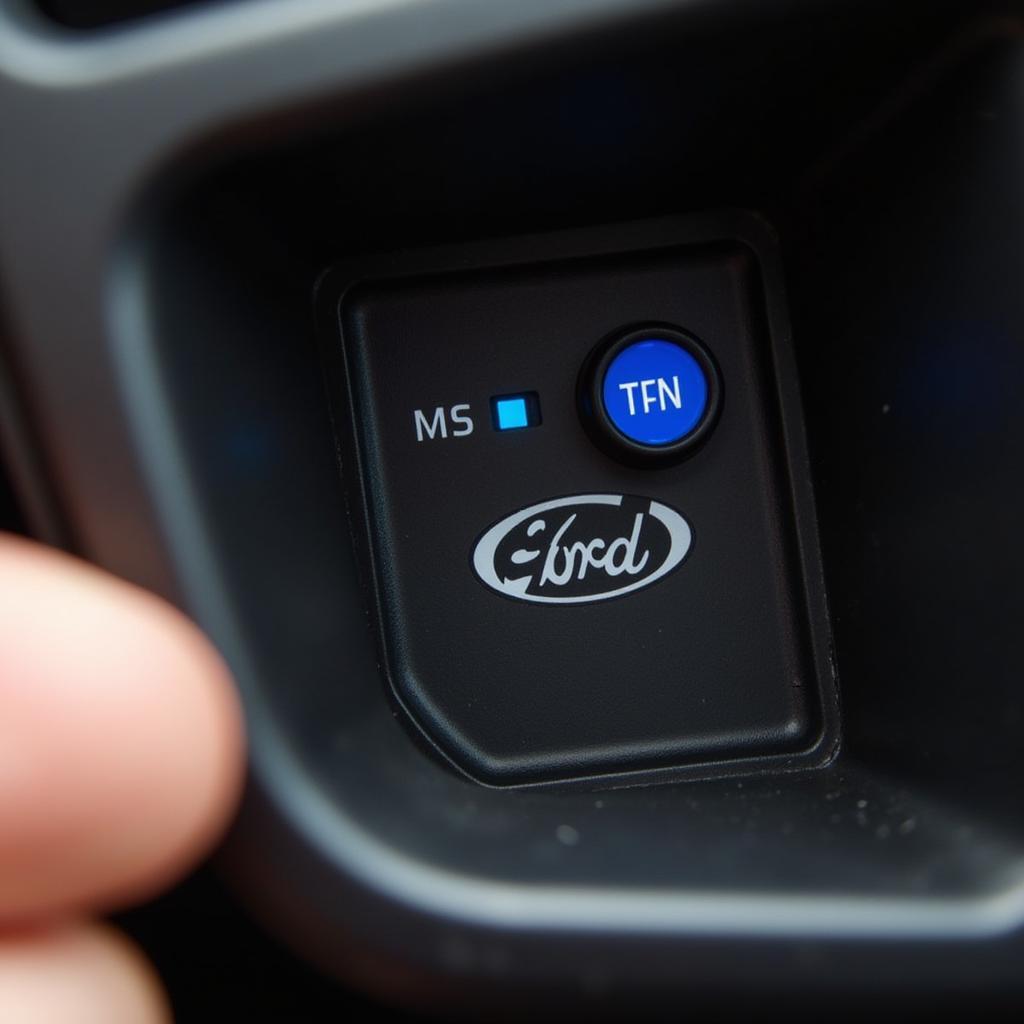Dealing with a malfunctioning anti-theft system on your Ford can be frustrating. You might be thinking about disabling it altogether. However, before you consider that, let’s explore some common causes and solutions. Understanding how to troubleshoot the system can often save you time and potential headaches.
Common Causes of Ford Anti-Theft System Issues
There are a number of reasons why your Ford anti-theft system might be acting up. Here are a few of the most common culprits:
- Weak or Dead Battery: A low battery is a frequent trigger for anti-theft systems. The system might interpret the low voltage as an attempted theft.
- Faulty Key Fob Battery: Much like your car battery, a dying key fob battery can disrupt the signal between your key and the vehicle’s system, leading to activation of the anti-theft measures.
- Malfunctioning Key Fob: Beyond the battery, the key fob itself can experience internal component failure, hindering its ability to communicate with your car.
- Damaged Ignition Cylinder: Issues with the ignition cylinder, where you insert your key, can prevent the transponder in the key from being recognized, causing the anti-theft system to engage.
- Wiring Problems: Corrosion or damage to the wiring related to the anti-theft system can interfere with the signal transmission, leading to malfunctions.
Identifying a Ford Anti-Theft System Problem
Recognizing the signs of an anti-theft system problem can help you diagnose the issue:
- Rapid Flashing Security Light: A quickly blinking security light on your dashboard is one of the most obvious indicators of a system malfunction.
- Engine Cranks but Won’t Start: If you hear the engine turning over but it refuses to start, the anti-theft system might be preventing ignition.
- Clicking Sounds When Starting: Unusual clicking noises during your starting attempts can also signal a problem with the anti-theft system.
Equipment Needed for Troubleshooting
Before you begin any troubleshooting, gather these tools:
- Voltage Meter: This will help you check the battery voltage.
- Replacement Batteries: Have fresh batteries on hand for both your car and key fob.
- Code Reader (Optional): A code reader can help identify specific error codes stored in your car’s computer, offering more detailed insights into the issue.
Troubleshooting Steps
1. Check Your Battery: Begin by inspecting your car battery. If you notice any signs of corrosion on the terminals, clean them with a baking soda and water solution. Use your voltage meter to ensure the battery is sufficiently charged. If the voltage is low, try jump-starting your car.
2. Inspect and Replace Key Fob Battery: Open your key fob and replace the battery with a new one. Ensure it’s the correct type for your model. After replacing, try starting your car again.
 Checking the car battery
Checking the car battery
3. Test Your Key Fob: If replacing the battery doesn’t work, the key fob itself may be faulty. Attempt to start your car using the spare key. If the spare key works, it indicates a problem with your primary key fob, and you may need to have it reprogrammed or replaced.
4. Inspect the Ignition Cylinder: Carefully examine the ignition cylinder for any signs of damage or debris. If you notice any issues, it’s best to contact a qualified mechanic for repair or replacement.
5. Seek Professional Assistance: If none of the above steps resolve the problem, it’s highly recommended to seek assistance from a qualified automotive electrician or a dealership. They have the specialized diagnostic tools and expertise to pinpoint and address more complex electronic issues within your Ford’s anti-theft system.
FAQs about Ford Anti-Theft Systems
Q: Can I bypass the Ford anti-theft system myself?
A: While there are online resources suggesting methods to bypass the system, these are generally not recommended. Tampering with the system can lead to further damage, potential warranty issues, and even legal ramifications.
Q: How much does it cost to fix a Ford anti-theft system problem?
A: The cost can vary greatly depending on the root cause. Simple fixes like battery replacement are relatively inexpensive, while more complex issues requiring specialized parts or labor can be pricier.
Q: I’ve heard about using a special device to diagnose car problems. What are those?
A: You’re likely thinking of OBD2 scanners, which are powerful tools used to read diagnostic trouble codes stored in a vehicle’s computer. For in-depth diagnostics and specialized functions, professional-grade devices like those offered by Cardiagtech are highly recommended.
Q: Can Cardiagtech help me with my Ford anti-theft system issue?
A: While disabling an anti-theft system is not a service we endorse due to security reasons, Cardiagtech offers a range of cutting-edge diagnostic and programming solutions that can be instrumental in identifying and resolving various automotive electronic issues, including those related to anti-theft systems.
 Using an OBD2 scanner on a Ford vehicle
Using an OBD2 scanner on a Ford vehicle
Need Expert Assistance?
If you’re facing persistent trouble with your Ford anti-theft system, don’t hesitate to reach out to the experts at CARDIAGTECH. We offer a comprehensive range of advanced diagnostic and programming solutions designed to tackle even the most challenging automotive electronic issues. Our team is dedicated to providing top-notch support and helping you get back on the road safely and swiftly.

